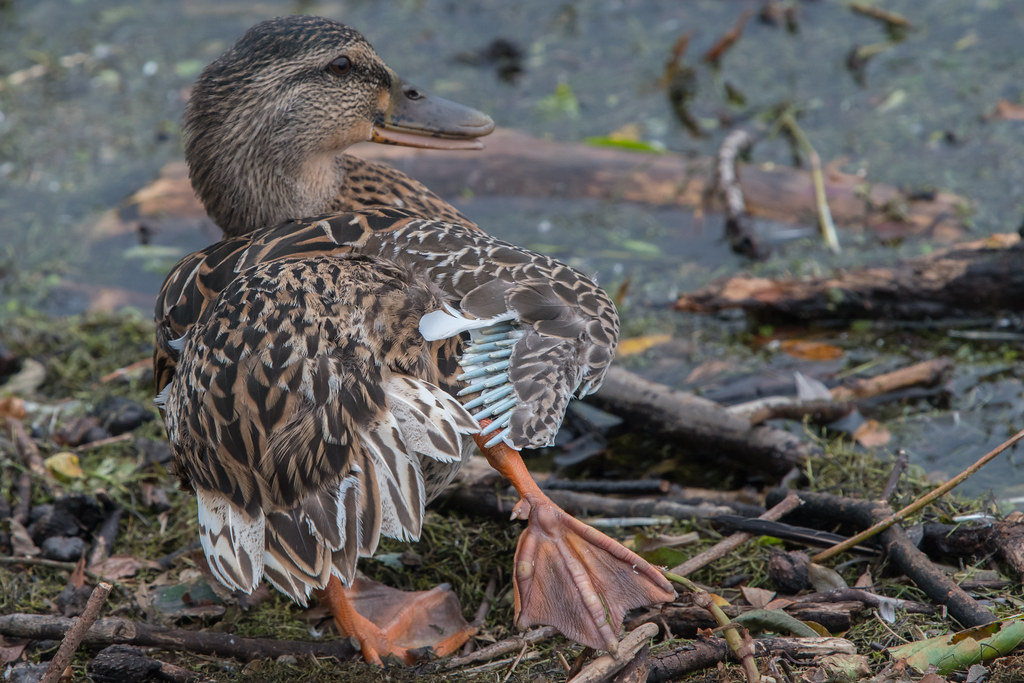
Tim writes: I know that this isn’t a contender for bird photograph of the year but it does show something interesting. It shows that ducks moult all their flight feathers simultaneously, so they are completely flightless for a time.
Most birds moult their flight feathers gradually, one pair at a time so that they are still able to fly if danger threatens while they are moulting. But ducks can take to the water to avoid land predators like Foxes, so they can afford to shed all of their flight feathers simultaneously. Male ducks have very showy plumage which attracts attention, but that’s not really what they want when they cannot fly. So before a male duck sheds its flight feathers it undergoes a full head and body moult so that it resembles the camouflaged female. Then after he has grown a new set of flight feathers he has another full head and body moult to regain his breeding plumage. This moult is usually undertaken soon after breeding, and the female-type plumage of males is known as eclipse plumage.
A few other birds also moult all their flight feathers simultaneously, such as Auks (Puffins, Guillemots etc) and is undertaken when they are chaperoning half-grown chicks out at sea when they wouldn’t really need to fly. I used to give evening classes in Ornithology many years ago and I could never get a photograph showing a duck that has lost all of its flight feathers during moult. This is probably because flightless ducks are usually extremely wary and will paddle-steamer across the water at the first hint of danger. But I managed to capture this flightless female Mallard having a wing and leg stretch, revealing just the pins of growing flight feathers. The secondary flight feathers in Mallards form that bright blue patch at the back of the wing, also known as the speculum, which is missing (ie growing) on this bird. You can even see the flight feathers on the alula, or bastard wing at the elbow are in pin.
[registration_form]
It’s an excellent photo, Tim. I’ve never seen a duck in eclipse plumage near enough to tell s/he was, so thanks for showing this so clearly.
Did that duck have ducklings in tow?
From the photo, I’d say not.
There are a few fluffy blobs of spring bobbing on a sheet of water near me. About six months out of synch.